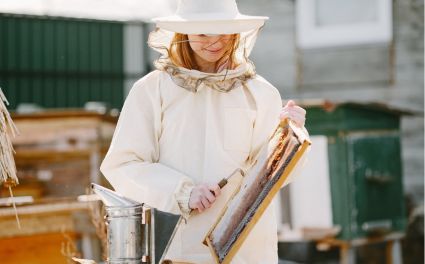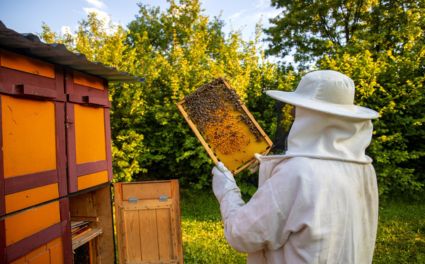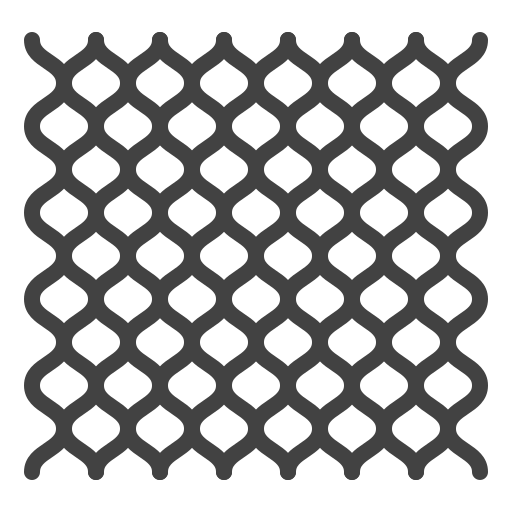Beekeeping can be exciting and rewarding — but even the best work gloves, hive tool, and bee smoker can’t replace proper protective clothing. A full beekeeping suit is your outer barrier against stings, but what you wear underneath matters too. The right base layers keep you cool, comfortable, and safe, especially on long apiary days.
This guide explores practical under-suit clothing choices, layering tips, and smart accessories so that every beekeeper — from beginners to pros — can focus on the bees, not the sweat.
Why Under-Suit Clothing Matters
While the outer suit shield prevents direct bee contact, your inner layers determine how comfortable you are and how well you can work.
Comfort + Breathability
-
Inner clothes need to be lightweight, breathable, moisture-wicking. Materials like cotton or linen help with airflow and reduce sweat buildup. Synthetic fabrics may trap heat, making you uncomfortable.
-
Well-chosen undergarments reduce the chances of overheating — an important factor when keeping hives during warmer weather or in hot climates.
Second Barrier for Safety
-
Long-sleeved shirts and long pants act as the first lines of reinforcement. If the outer suit ever fails (tear, loose zipper, bug inside), your inner layer still offers protection.
-
Tucking in your shirt and pants, wearing beekeeping trousers beneath the outer gear, and ensuring cuffs are tight helps block gaps where bees might crawl in.
Proper Fit & Movement
-
Clothing should be snug but not tight, leaving enough room for movement. Oversized baggy clothes can snag, bunch, or interfere with the suit’s protective seal.
-
Avoid layers that are too bulky — you want freedom to bend, lift frames, or carry tools easily.
Recommended Under-Suit Options
Here are specific types of clothing that work well underneath protective gear:
Long-Sleeved Tops & Shirts
-
Choose light-coloured materials (white, beige, pale tones) as darker shades tend to attract more attention from bees.
-
Tuck your shirt into your pants to prevent gaps.
-
Natural fabrics (cotton, linen blends) are ideal; breathable yet sturdy.
-
Moisture management matters: if sweat builds up, consider adding a base layer that wicks moisture.
Long Pants & Trousers
-
Select full-length trousers made from tightly woven fabric to reduce penetration risk.
-
Elasticated or draw-cuffed pants help stay closed around the ankles.
-
If you prefer, you can combine an outer jacket with separate beekeeping trousers for flexibility, especially when weather demands different layering.
-
Some trousers have reinforced knees or durable stitching — useful if kneeling or working near hive boxes often.
Footwear & Ankle Safety
-
Wear closed-toe boots or sturdy shoes; leather or thick rubber works best to resist stings.
-
Socks should be made of cotton or breathable blends (avoid synthetic sock materials that trap heat).
-
Taller boots can help, but adding beekeeping ankle protection ensures better sealing against crawling insects.
-
Some beekeepers also use gaiters or boot covers for extra protection in tricky terrain.
Gloves and Hand Protection
-
Although gloves are often part of your outer gear, your choice of under-layers can matter too: don’t wear very tight or scratchy socks that disturb your movement.
-
Ensure your beekeeping gloves are comfortable, allow dexterity, and fit well with your sleeves.
-
If gloves are bulky, inside grip may be easier when your sleeves and gloves fit seamlessly.
Headgear, Veils & Visibility
-
Many suits have attached hoods/veils, but you may find that a lightweight base hat or cap helps shape the hood better.
-
Choose suits with good visibility and proper mesh in veils that allow air circulation and clear vision.
-
High-quality beekeeping veils reduce bug pressure around your face and keep you calm while inspecting hives.
Clothing for Younger Beekeepers
-
For children or younger helpers, use smaller comfortable sets designed specifically for youth.
-
Beekeeping kids suits combine proper fit, safety, and ease of wear to keep kids safe without hindering their learning and comfort.

Avoid These Mistakes
-
Don’t use heavily scented lotions, perfumes, or cologne — bees are sensitive to smell, and strong scents may provoke them.
-
Don’t wear open-toed shoes, sandals, or flip-flops — these expose vulnerable foot areas.
-
Avoid overly thick or padded underlayers unless needed for cold weather; too much bulk can restrict movement.
-
Don’t skip inspection: check for gaps, torn seams, or areas where bees could enter.
Dressing Strategy & Layering Plan
Here’s a handy layering plan to follow:
-
Base layer: cotton or breathable shirt, tucked in.
-
Bottom layer: long pants, secured, no pockets hanging loose.
-
Socks + sturdy boots: + optional ankle protection to seal the bottom.
-
Outer gear: full beekeeping suit, or a combo of jacket and trousers if you prefer mobility.
-
Protective accessories: gloves, veil, optional hat, and any other barrier gear.
-
Always check your beekeeping suits collection (or supplier) for sizing, features, venting specs, and compatibility with layers.
Seasonal & Weather Considerations
-
Hot climates / summer: lighter fabrics, breathable shirts, mesh suits, minimal layers under the suit.
-
Cold weather / early spring / late autumn: layering with thin thermal undergarments is okay; ensure you still can move easily.
-
Monitor humidity and sweat build-up; choose materials that wick moisture.
-
In very wet or dirty conditions, consider having backup clothing so you’re not forced into the same damp gear repeatedly.

Why Choice of Gear Matters
Protective clothing isn’t just about what goes on your body — it’s about how well you can work, what environment you’re in, and how confident you feel during each hive inspection. Suits, veils, gloves, boots and ankle protection do their best work when inner layers support them rather than confound them.
Brands such as OZ Armour are aware of these needs. They design gear and accessories with real-world apiary use in mind — from venting to seam durability, visibility, fit, and safety. Their product options support both beginners and professional users, ensuring comfort and security across many conditions.
Further Reading & Expert Tips
If you want more guidance on protective gear, seasonal wardrobe, best practices and updates in bee safety gear, read more blogs about beekeeping to stay informed and up to date.
Final Take
What you wear under your beekeeping suit can make or break your comfort and how long you're willing to stay in the field. With the right balance of protection, breathability, fit, and attentiveness, you can focus more on bees and less on overheating, misfit clothing, or safety gaps.
Choosing good underlayers is as important as choosing the right outer gear. Pairing smart inner clothing with protective outer clothing and beekeeping accessories ensures safer, more enjoyable, and more productive beekeeping season after season.












